Publications
Exploring how people think, feel, and live in place.
2025
-
 Adaptation of Chinese traditional villages from the perspective of locality preservationPengcheng Xue, Jiayin Zhang, Fang Wang*, and 1 more authorIndoor and built Environment, 2025
Adaptation of Chinese traditional villages from the perspective of locality preservationPengcheng Xue, Jiayin Zhang, Fang Wang*, and 1 more authorIndoor and built Environment, 2025Recently, traditional villages in China have received multiple policy protections and capital injections. While these external interventions protect the cultural heritage of traditional villages and provide opportunities for development, they have gradually eroded their intrinsic adaptive cycle system. This study focused on 6819 traditional villages, revealed the characteristics and transitions of the adaptive cycle stages in traditional villages and described the internal mechanisms of adaptability within these villages. The research findings are as follows: Regarding adaptability characterisation, the adaptability of traditional villages has developed a regionally significant imbalance. The highest proportion of adaptability cycle stages was found in the poverty trap, exploration (r) and gambling traps. Traditional villages are mostly in a rigid state, with a few adaptive processes shifting between the poverty trap and exploration (r), requiring a new impetus to guide positive cycles. In terms of adaptability mechanisms, there was a significant negative relationship between locality, mobility and resilience in traditional villages. Intrinsic adaptive mechanisms gradually disintegrate, and there is an increasing risk of falling into a lock-in trap. This study provides empirical evidence for analysing the issues in traditional villages and offers recommendations for long-term planning and policy formulation of locality protection in traditional villages.
2024
-
 Constructing an ideal home: Affective atmosphere creation as a public participation strategy for urban village renovationMin Wang(Supervisor), Jiayin Zhang*, Haixiang Zou, and 2 more authorsCities, 2024
Constructing an ideal home: Affective atmosphere creation as a public participation strategy for urban village renovationMin Wang(Supervisor), Jiayin Zhang*, Haixiang Zou, and 2 more authorsCities, 2024The public participation process in the renovation of urban villages should not only ensure procedural justice but also guide the affective integration of residents. This paper explores the public’s perception of the participation space and the process of affective construction based on a visual study of the Luofeng village renovation in Guangzhou. The aim is to elucidate how the space can be employed to create an affective atmosphere as a strategy for the renovation. The study reveals that participants focused on visual symbols carrying the narrative of daily life, evoking a positive emotional response to these elements. The public participation space successfully establishes a homey atmosphere and achieves the affective reproduction of residents through the creation of its physical environment, residents’ embodied practices within it, and negotiated interactions among different subjects. Drawing on the case study, we advocate for the public participation process in urban village renovation to consider residents’ embodied affective experiences. It provides a practical model that surpasses mere representation, with the intention of offering a reference for sustainable urban renewal.
-
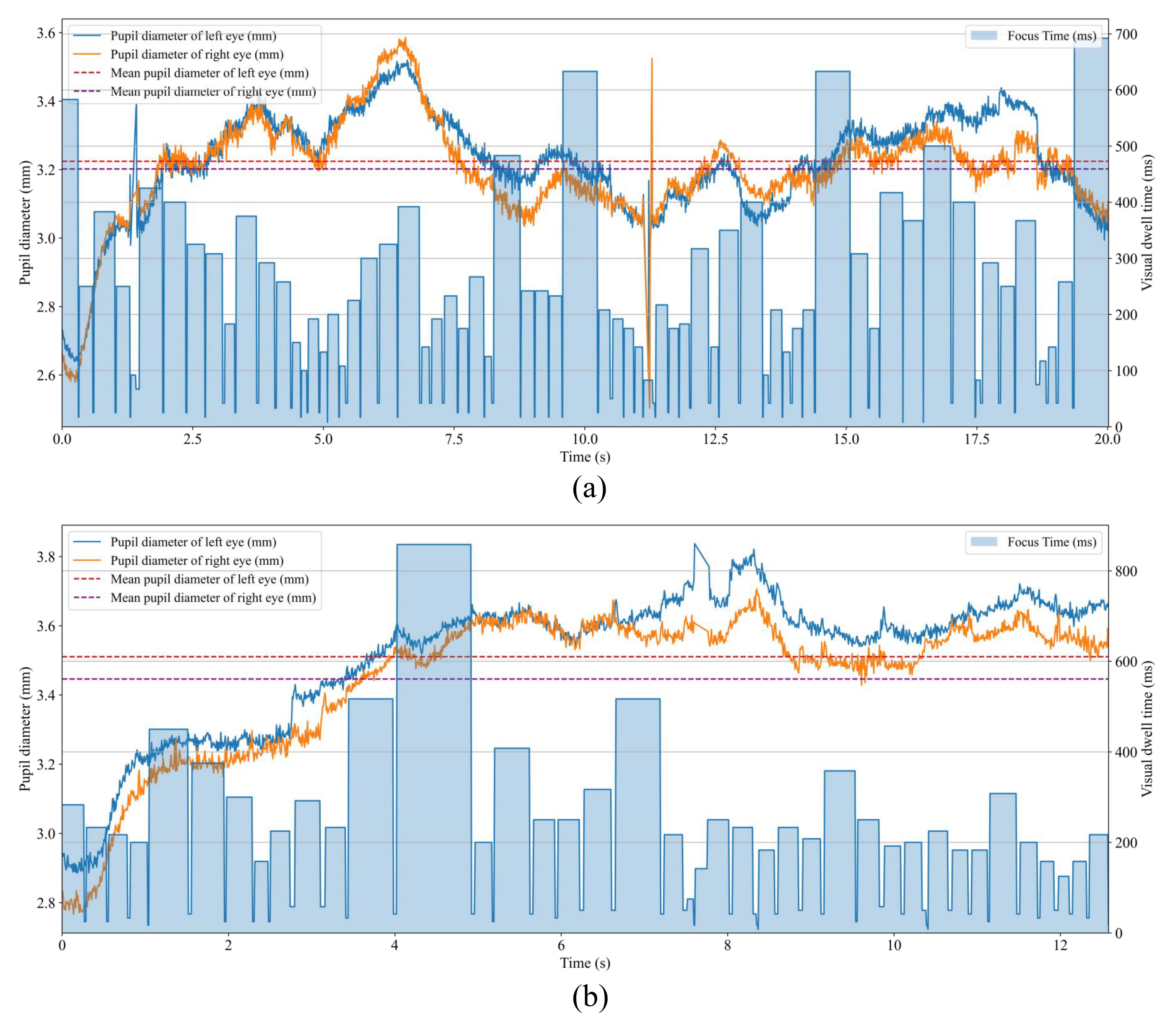 The urban aesthetics of graffiti murals: reproducing wall space in China’s urban renewalJiayin Zhang, Huilin Deng, Mingliang Lin, and 1 more authorVisual Communication, 2024
The urban aesthetics of graffiti murals: reproducing wall space in China’s urban renewalJiayin Zhang, Huilin Deng, Mingliang Lin, and 1 more authorVisual Communication, 2024In China, as in the West in recent decades to a lesser degree, the semantics of ‘graffiti’ have gradually become an alternative term for graffiti murals in urban renewal. Graffiti murals, through various renewal strategies, reproduce the wall spaces of old towns, factories and villages in Chinese urban areas, giving rise to diverse aesthetic attitudes. Taking Guangzhou, China, as a case study, this article utilizes graffiti mural images defined as ‘graffiti’ by people on social media as the basic material. Visual research methods such as photo evaluation and eye-tracking experiments are employed to analyse the aesthetic attitudes and mechanisms of mainstream street art, which in fact differ from traditional graffiti. The study reveals that people perceive different types of graffiti mural spaces in various ways, with a more positive aesthetic attitude towards urban mural landscapes that exhibit aesthetic coherence. Viewers with embodied practice experiences in ‘graffiti’ show stronger aesthetic emotions compared to those who have not visited the case study location. These differences are further influenced by the aesthetic atmosphere of the environment and the aesthetic practices of different subjects onsite, deviating slightly from the spatial aesthetic operational logic of traditional graffiti. From various perspectives on Chinese ‘graffiti’, the visual methodology constructed in this study provides new insights for the aesthetic management of urban renewal.
-
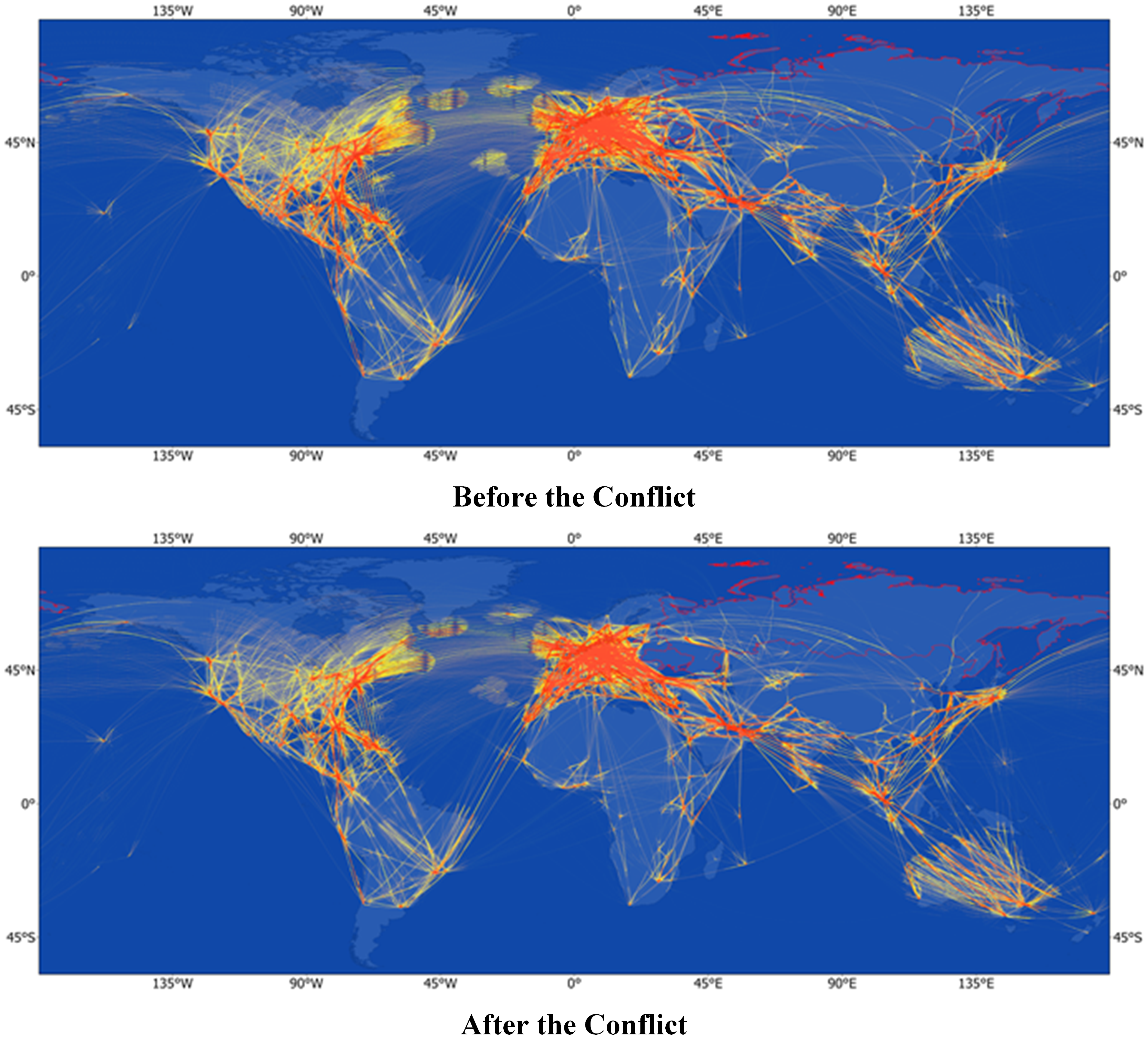 Impacts of the Russia-Ukraine Conflict on Global Air Transportation: from the View of Mass Flight TrajectoriesChen Chu, Hengcai Zhang*, Jiayin Zhang, and 1 more authorJournal of Air Transport Management, 2024
Impacts of the Russia-Ukraine Conflict on Global Air Transportation: from the View of Mass Flight TrajectoriesChen Chu, Hengcai Zhang*, Jiayin Zhang, and 1 more authorJournal of Air Transport Management, 2024Air transportation has been severely affected by the Russia-Ukraine conflict. The closure of involved Russian and Ukrainian airspace made a great number of flights suffer from a dramatic transportation cost increase. Accurately estimating the conflict’s impact can help us better comprehend the susceptibility of international airlines and optimize flying routes for global airlines. In this study, we quantitatively analyzed the impact the conflict has brought on global air transportation. The detour of airlines and the variation of flights caused by the conflict were assessed from the view of mass flight trajectories. A flight cost increment index is proposed to reveal the extra costs of involved countries. The impacts on each involved country are further analyzed and the airlines influenced the most are identified. The results show that the flight cost of 6.23% of global international flights significantly increased by 13.32% due to the conflict. Furthermore, as one of the few researches that analyze the impact of regional events on global air transportation, the result of the study reveals the vulnerability of international airlines and provides instruction for flying route optimization.
2023
-
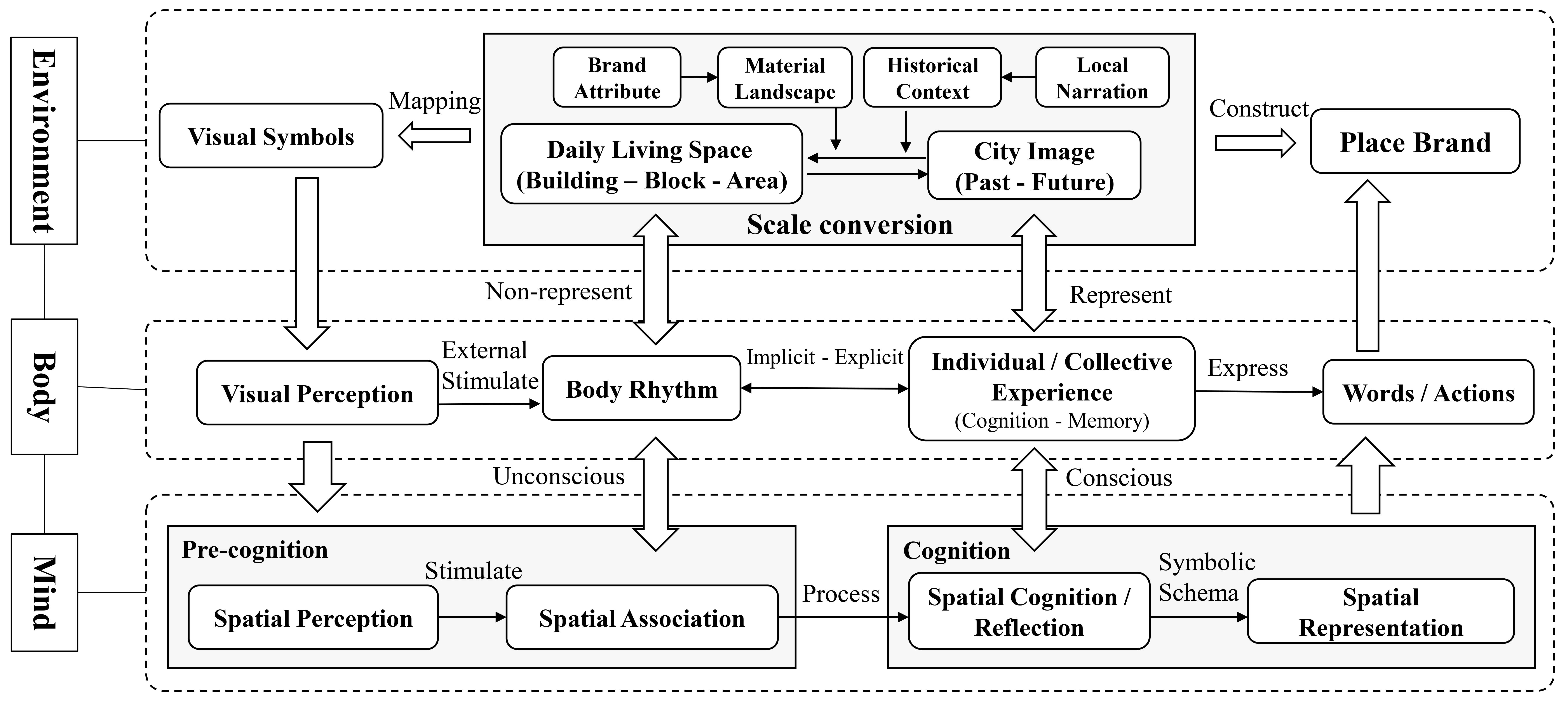 Scale transformation of place brands: A visual study of Xinhepu, GuangzhouJiayin Zhang, Mingliang Lin, Min Wang*, and 1 more authorHumanities and Social Sciences Communications, 2023
Scale transformation of place brands: A visual study of Xinhepu, GuangzhouJiayin Zhang, Mingliang Lin, Min Wang*, and 1 more authorHumanities and Social Sciences Communications, 2023Place branding has become a popular strategy to promote place visibility and place image communication and gains attention in the field of city planning, geography, and place management. The contribution of geographical knowledge has been emphasized and discussed in recent place branding studies, including the role of geographical scale in branding strategies and management. However, current research mainly places the issues of scale from the top-down perspective of branding governance, and the bottom-up processes based on local culture and embodied experiences are overlooked. Drawing on participatory-based visual methodology, in the article, a combination of self‐directed photography, photo evaluation, eye-tracking experiment, and interview are employed to the scale transformation performance of place brands from the perspective of embodied experience. Taking Xinhepu in Guangzhou, China as a case study, the results show that both residents and nonresidents do not limit their perception of the Xinhepu brand to a microscale space but point to the city of Guangzhou. Specifically, the process of scale transformation of place brands is characterized by the interaction of temporal and spatial factors that provide possibilities for scale transformation. The physical landscape in space plays a role in place branding, while in time scale, Xinhepu connects Guangzhou’s past and present and is a microcosm of the city’s image and historical development; thus, in people’s embodied perception, Xinhepu can be transformed into a city brand through place culture creation. The article can provide a new explanation for the construction of place branding at multiple geographical scales and explore how the body’s unconscious, nonrepresentational rhythms play a role in place brand scale transformation.
-
 Evaluations of Guangzhou’s brand building through intangible cultural heritage: A brand equity modelJiayin Zhang, Min Wang, and Yinbin Lin*Place Branding and Public Diplomacy, 2023
Evaluations of Guangzhou’s brand building through intangible cultural heritage: A brand equity modelJiayin Zhang, Min Wang, and Yinbin Lin*Place Branding and Public Diplomacy, 2023Culture is an indispensable indicator for the promotion of city image that has always been regarded as an important dimension of a city brand. This study uses the brand equity model, takes Guangzhou’s intangible cultural heritage (ICH) as an example, analyses the overall value of ICH in city branding, and further discusses the promotion mechanism of the brand equity of Guangzhou’s ICH by constructing a structural equation model. The results show that (1) Guangzhou’s ICH has a good reputation among residents and tourists, reflecting high brand equity; (2) the promotion of brand equity of Guangzhou’s ICH is mainly realized through three paths: brand awareness → brand loyalty, brand awareness → brand perceived quality → brand loyalty and brand awareness → brand associations → brand loyalty. The research combines cultural development and city branding to provide a certain value reference for urban cultural regulation and city branding.
-
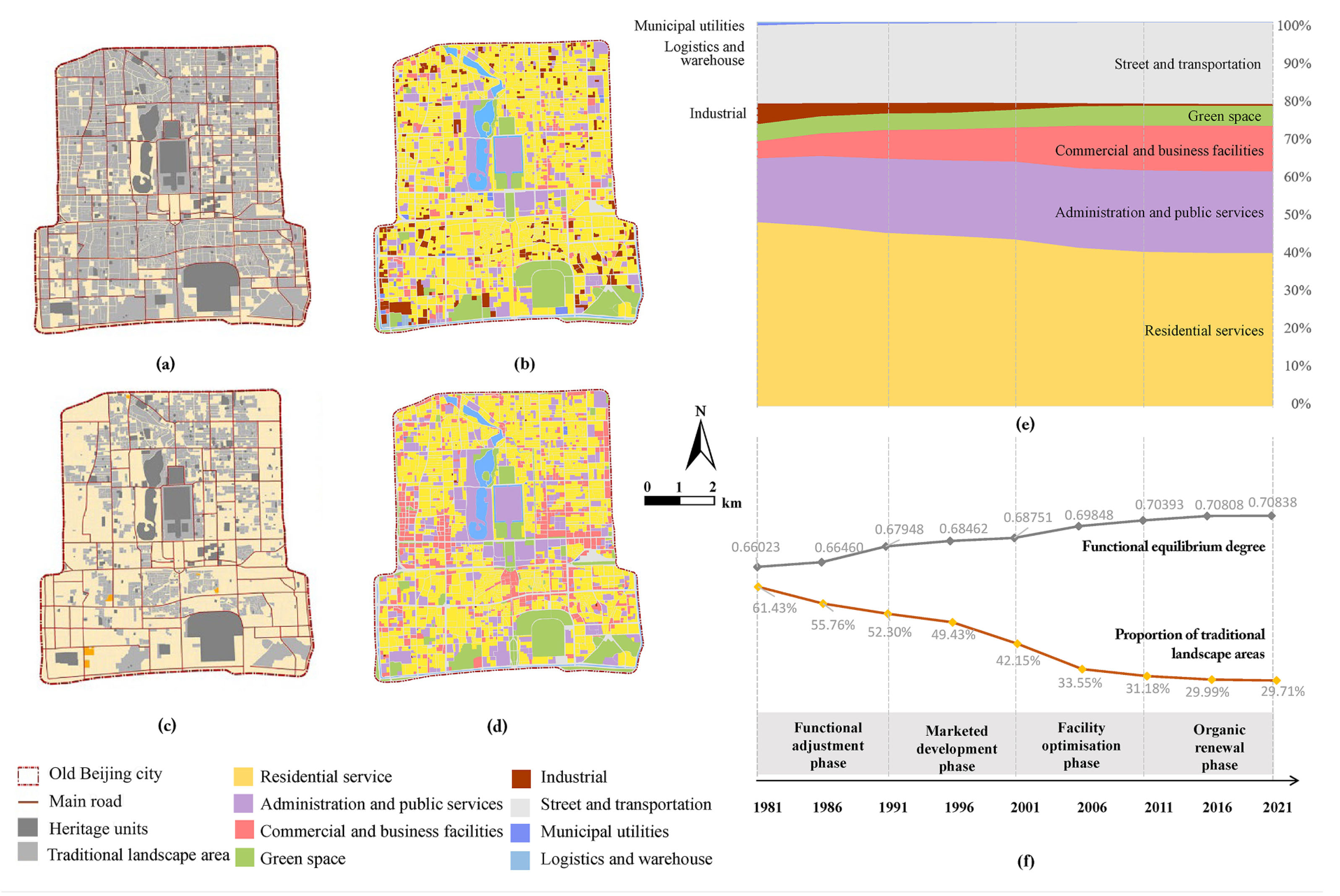 How to achieve a balance between functional improvement and heritage conservation? A case study on the renewal of old Beijing cityShunyi Wang, Jiayin Zhang, Fang Wang*, and 1 more authorSustainable Cities and Society, 2023
How to achieve a balance between functional improvement and heritage conservation? A case study on the renewal of old Beijing cityShunyi Wang, Jiayin Zhang, Fang Wang*, and 1 more authorSustainable Cities and Society, 2023Historic city centers require function optimization, while simultaneously being pressured to maintain their heritage conservation and utilization. How to reconcile the two is currently a challenge for the regeneration of many old cities. With old Beijing city as the study area, this study innovatively interpreted the value of heritage from the perspective of urban functions, showing the multiple roles and identities of heritage in modern adaptation. In past 40 years, the gradual improvement of urban functions and more even distribution of facilities in old Beijing city comes at the expense of 51.6% of the historic architectural district. Modern urban heritage exists as several types of functions, mainly tourism-attractive heritage as ancient capital’s explicit carrier of history and culture, urban-functional heritage as a stock resource for rational use, combined tourism-attractive and urban functional heritage. Compared with other zones, historic areas have more mixed functional units, predominantly residential mixed with cultural, scientific and educational, and administrative functions. A case study was conducted on nine types of typical heritage sites and their surrounding functional organization patterns, providing references for balancing urban function optimization and heritage conservation and utilization for sustainability.
-
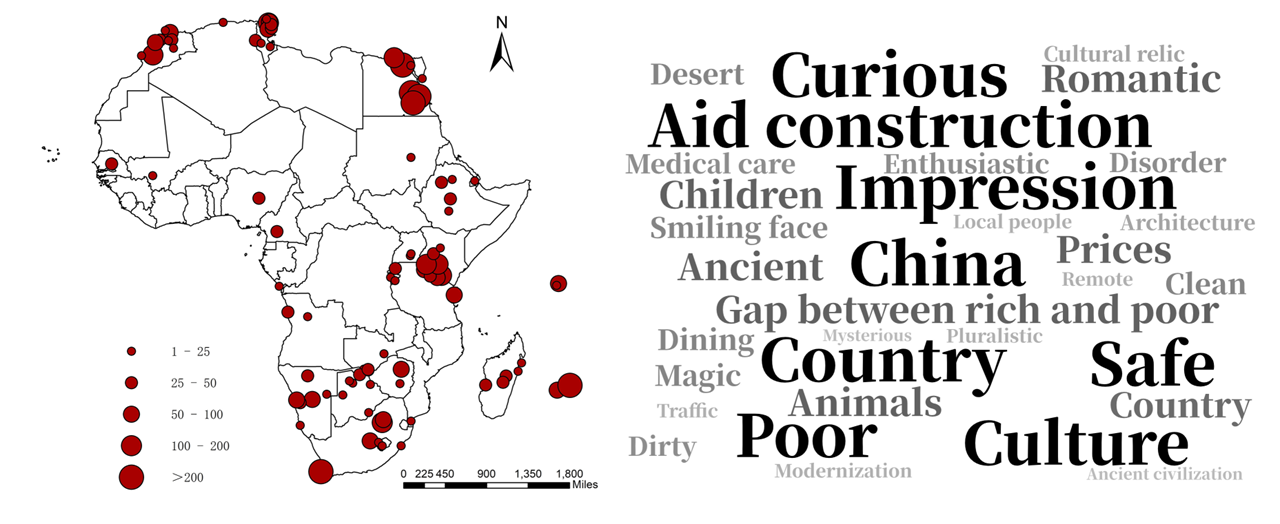 The everyday Chinese framing of Africa: A perspective of tourism-geopolitical encounterNing An(Supervisor), Jiayin Zhang, and Min Wang*Geopolitics, 2023
The everyday Chinese framing of Africa: A perspective of tourism-geopolitical encounterNing An(Supervisor), Jiayin Zhang, and Min Wang*Geopolitics, 2023This paper conducts a discourse analysis of Chinese tourist writings about Africa on the most popular Chinese online tourist forum, Mafengwo (hornet’s nest). By examining 2,950 travelogues collected online, our research finds that Chinese tourists’ conceptions of Africa are mainly built through 5 frames, including the exotic frame, the adventurous frame, the poverty frame, the China’s engagement frame, and the affection frame that describe Africa as a remote, exotic, adventurous, dangerous, miserable, and backward place compared to a modern China that strongly supports Africa’s development. Much tourist writing corresponds with the official Chinese geopolitical narrative of China-Africa relations that perceives China itself as a peacefully rising power who would also like to help developing others like Africa. However, we also find that some Chinese tourists’ descriptions of Africa fit uneasily into the official Chinese geopolitical conceptions, in which they demonstrate affection for Africa, but only in regard to its Western aspects, e.g., architecture, food, activities. One contribution of this study is providing a bottom-up Chinese citizenry discourses and cultural experiences of Africa, and with this empirical analysis it updates theories of everyday Chinese geopolitics of tourism. We think this study is unique in that we have broadened the understanding of both official and citizenry Chinese geopolitical conceptions and their (dis)connections, in particular from the everyday encounter between geopolitics and tourism, which also sets a frame for comprehending Chinese citizenry geopolitical conceptions of the outside ‘other’.
-
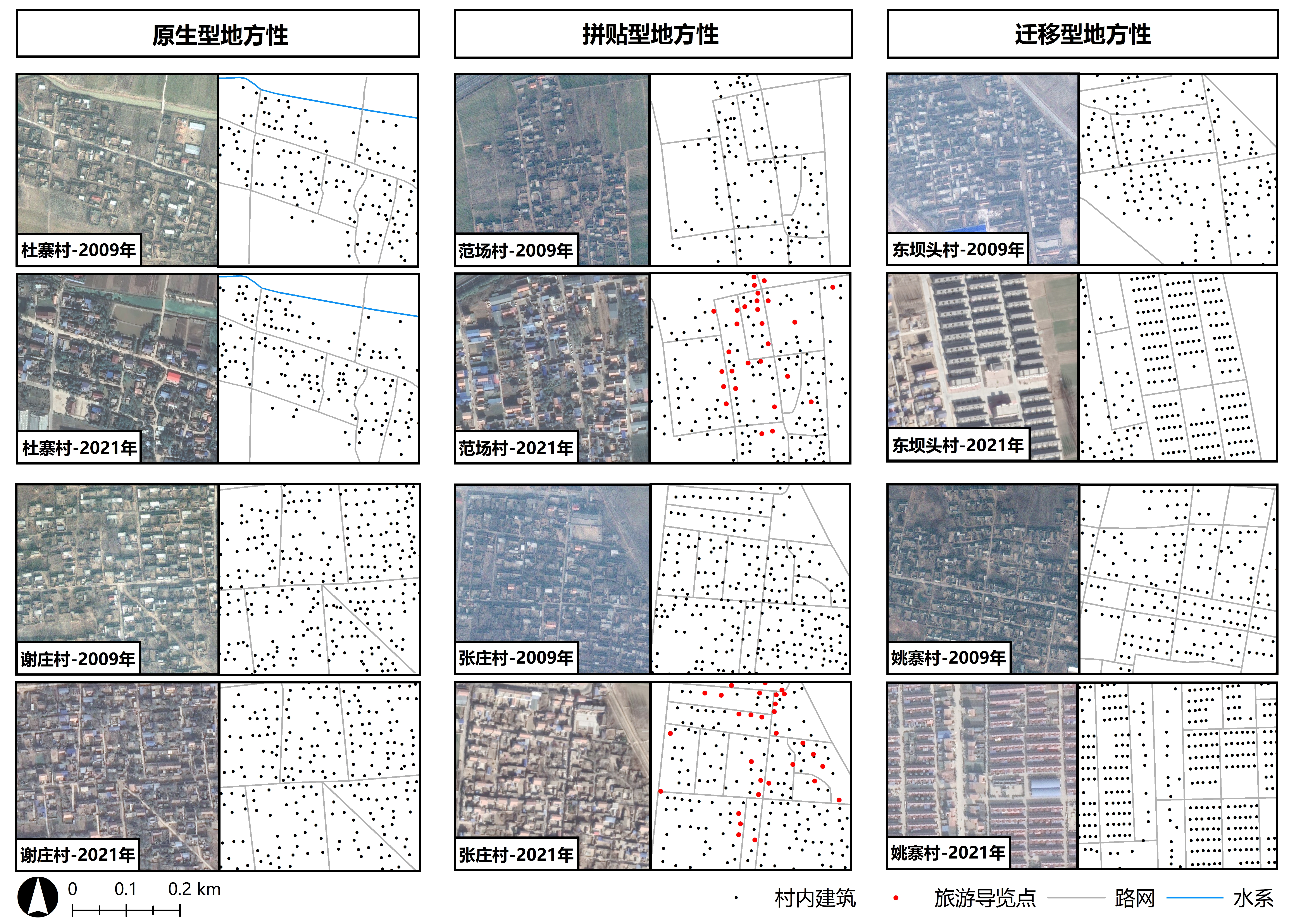 Differentiation, reconstruction and mechanism analysis of rural local landscape in ecological adaptationFang Wang*(Supervisor), Jiayin Zhang, Chenlong Bian, and 1 more authorChinese Landscape Architecture, 2023
Differentiation, reconstruction and mechanism analysis of rural local landscape in ecological adaptationFang Wang*(Supervisor), Jiayin Zhang, Chenlong Bian, and 1 more authorChinese Landscape Architecture, 2023Under the influence of complex natural environment, rural local landscape presents dynamic ecological adaptation, differentiation and reconstruction, and revealing its reconstruction mechanism is the basis of rural multi-characteristic protection and livable development. Taking the typical villages of Lankao County under ecological constraints as an example, this paper reviewed the actor network process of Lankao rural local landscape in two stages of intensive ecological governance and adaptation at the county level and differentiation and reconstruction of rural local landscape from the perspective of ecological adaptation, and analyzed the accompanying evolution of landscape characteristics such as rural land use structure, building distribution pattern and courtyard spatial form. The paper also analyzed the mechanism of rural local landscape differentiation and reconstruction, and found that the change of ecological constraints dominated the stage succession of landscape reconstruction, and the differentiation of ecological adaptation paths promoted the differentiation of rural landscape into local types such as native type, collage type and migration type, which provided the basis for rural multiple positioning and transformation governance.
2022
-
 A sustainability lens on the paradox of Chinese learners: Four studies on Chinese students’ learning concepts under li’s “virtue–mind” frameworkRuixiang Gao, Jiayin Zhang, Yirao Liu, and 7 more authorsSustainability, 2022
A sustainability lens on the paradox of Chinese learners: Four studies on Chinese students’ learning concepts under li’s “virtue–mind” frameworkRuixiang Gao, Jiayin Zhang, Yirao Liu, and 7 more authorsSustainability, 2022The paradox of Chinese learners refers to a contrast between poor learning approaches and high achievement in China, which reveals a lack of sustainability in Chinese education. In addressing this paradox, Jin Li stood out by studying culture-based learning concepts and providing a comprehensive theoretical framework of the Eastern virtue model versus the Western mind model. However, this framework has not been thoroughly tested in the age of global cultural exchange, and the best learning model for learners has not been determined. This paper used both qualitative (replicating Li’s word association test) and quantitative methods to retest and enrich Li’s theory in present-day China, using four empirical studies. Studies 1 and 2 revealed the influence of global cultural exchange in narrowing the gap between the two models, with appropriate modifications made to Li’s theory. Studies 3 and 4 demonstrated that both of the two models were conducive to students’ academic achievement and creativity, greatly enriching Li’s theory. The implications of achieving a dynamic balance between the virtue model and the mind model to improve the sustainability of Chinese student development are discussed, which contributes to achieving the United Nations’ Sustainable Development Goals.
-
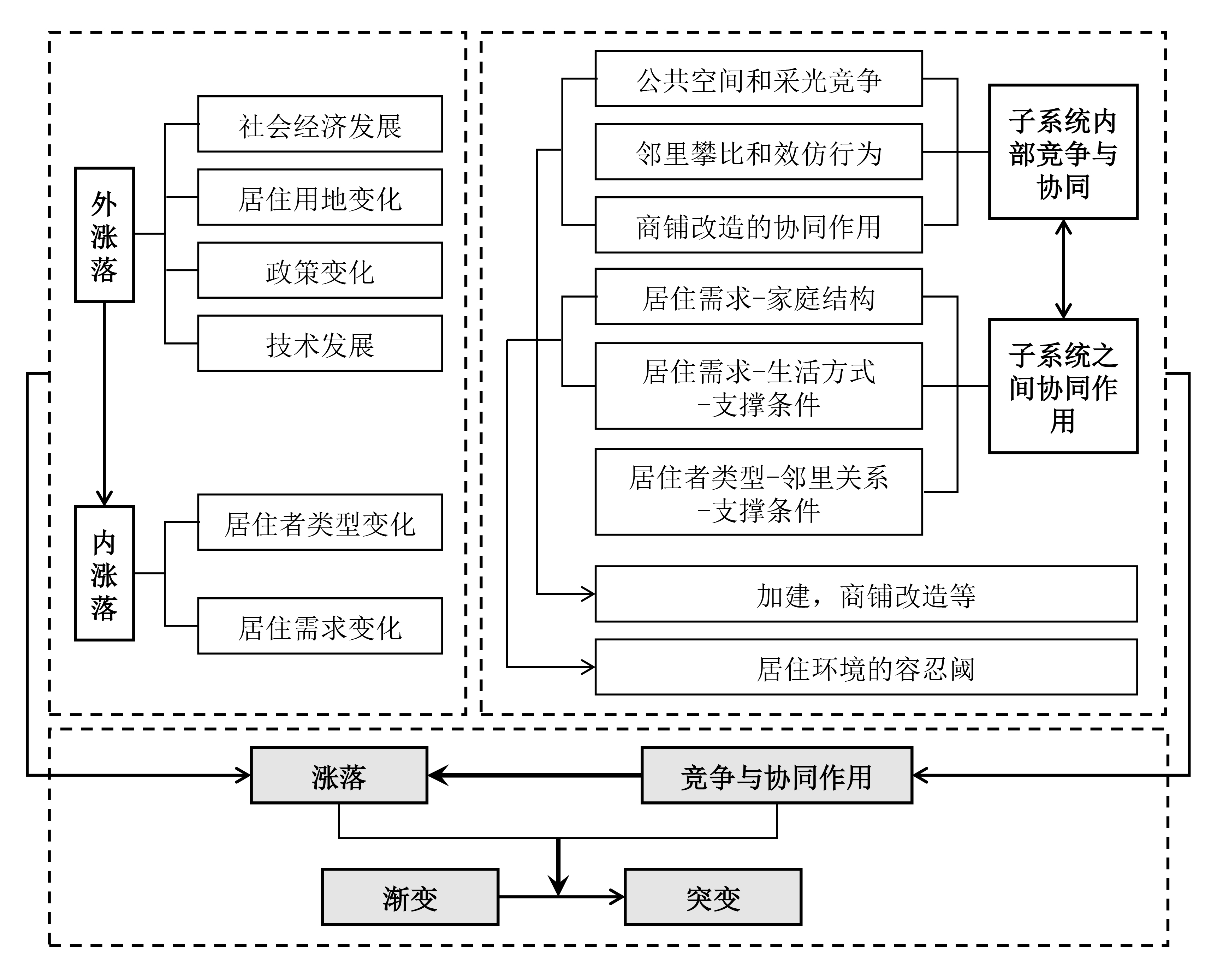 Study on self-organized renewal of traditional residences in modern adaptation: A case of Yulin acropolis courtyards in Shaanxi provinceFang Wang*(Supervisor), Jiayin Zhang, and Kaiyu LeiPlanning for the People, 2022
Study on self-organized renewal of traditional residences in modern adaptation: A case of Yulin acropolis courtyards in Shaanxi provinceFang Wang*(Supervisor), Jiayin Zhang, and Kaiyu LeiPlanning for the People, 2022Traditional dwellings undergo complex and rapid adaptation and renewal in the process of social modernization, reflecting the economic and social development of the same period and the social and cultural transformations triggered by it, implying the people’s aspiration for a better living environment, and embodying the demand for the construction of livable urban and rural local landscapes. This paper selects the courtyard houses of Yulin Acropolis in Shaanxi Province as the research object, and combines the self-organization theory with the qualitative research method to analyze the self-organization characteristics, process and mechanism of its renewal and evolution. It is found that the renewal of Yulin Acropolis courtyard houses is characterized by self-organization, and the process of the evolution of houses is formed by the interactions of residents, social relations, and living and supporting conditions in the changes; the internal and external ups and downs drive the system imbalance, the competitions and synergies within and between the subsystems, as well as the renewal of the house system from gradual change to mutation, which together constitute the mechanism of self-organization of renewal of the traditional houses in the modern adaptations. The study aims to provide ideas and suggestions for the conservation and development of traditional dwellings.
2021
-
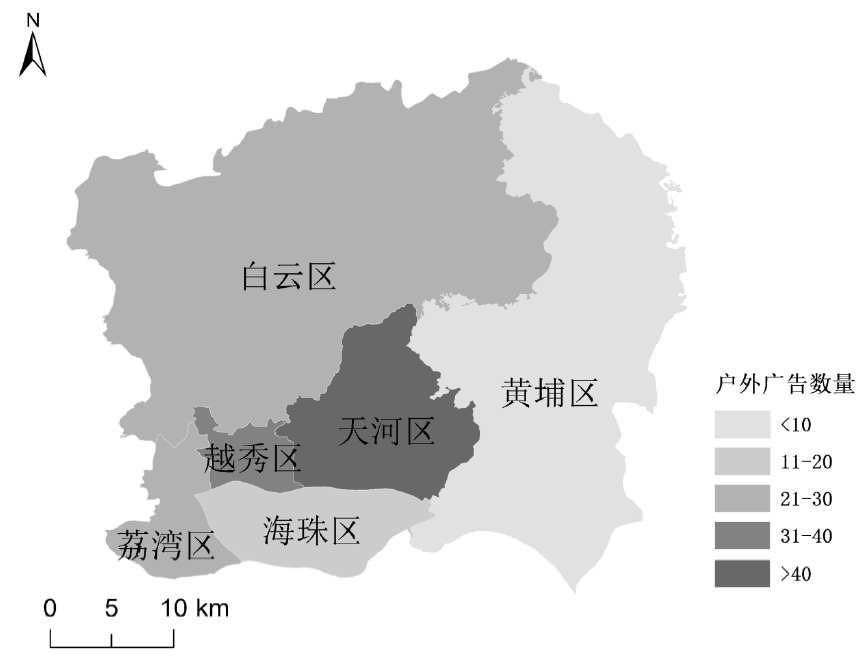 Urban emotional geography and spatial governance: A case of publicity outdoor advertising in Guangzhou urban areaYuancheng Lin, Jiayin Zhang, Luhua Li, and 1 more authorWorld Regional Studies, 2021
Urban emotional geography and spatial governance: A case of publicity outdoor advertising in Guangzhou urban areaYuancheng Lin, Jiayin Zhang, Luhua Li, and 1 more authorWorld Regional Studies, 2021Under the trend of "emotional turn" of human geography, urban public space pays more attention to the discussion on the emotional level, and the construction of emotional space plays a positive role in the governance of urban space. This paper takes the publicity outdoor advertisements in Guangzhou urban area as an example, citing the emotional geography research theory and the related discussion of spatial governance, and using semantic text analysis and interviews to discuss the role of publicity outdoor advertisements in the process of creating emotional space. Then discuss the constructive impact on urban spatial governance. The study found that outdoor advertising especially publicity outdoor advertising production emotional space, through visual representation by the Body-Block-City three dimensions emotional atmosphere. In the urban public space of individual with the kind of publicity outdoor advertising discourse reconstruction of urban space under the action of imagination, produce the mood such as "belonging", "identity" and "security". And through visual, emotional and other non-representational forms to make residents in the self-monitoring to deepen the group cultural identity, so as to make space governance internalized. This study combines emotional geography, urban public space and spatial governance, and places the study of emotional geography in the mesoscale of the city, enriching the scale and perspective of emotional geography research.